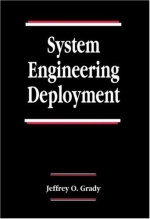Tab Article
System Engineering Deployment shows you how to make systems development work for your organization. It focuses on the deployment of the system engineering process that will propel your organization to excellence. The strategies covered will help organizations already using a systems approach fine tune their systems as well as giving organizations the tools to develop systems of their own. Topics include:
· enterprise knowledge
· organizational structure for work
· the jog system engineering method
· task cost and schedule estimating
The author focuses on the development of a quality systems approach into programs that can be used to develop an integrated master plan and schedules. The book provides the optimum marriage between specific program planning and a company's generic identity.
With System Engineering Deployment you can design an effective systems approach to perfection.


